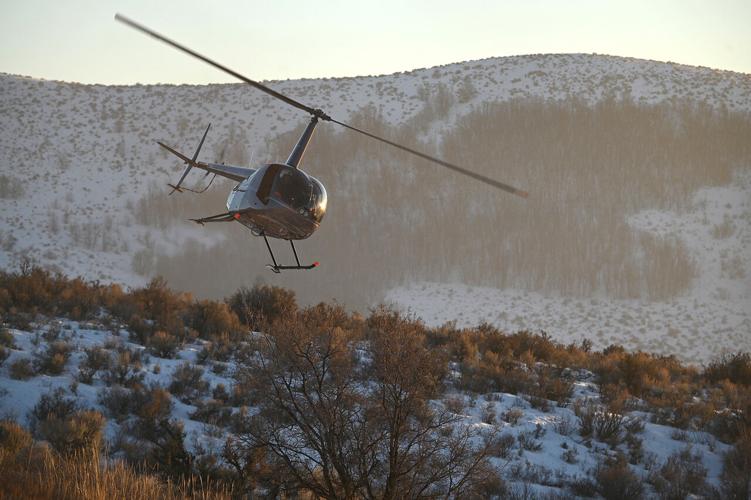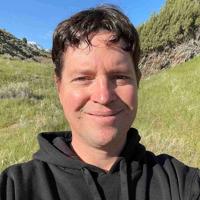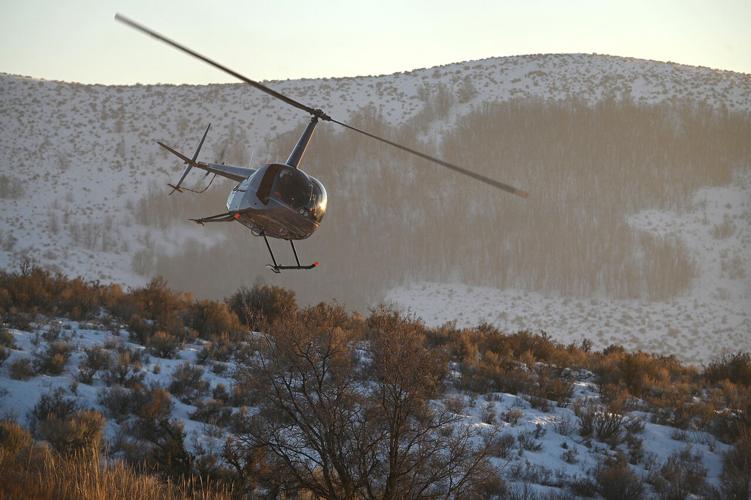The Sagebrush Steppe Land Trust (SSLT) has been on a hot streak lately.
Throughout its 20 years of operation, SSLT has protected nearly 10,500 acres of prime habitat and working lands within seven Southeast Idaho counties from development.
Of those 10,500 acres, 40% of that land was permanently protected within the past two years.
SSLT celebrates and sends enthusiastic announcements to members and stakeholders whenever its total protected acreage grows, yet conservation easements are only the beginning of a land trust’s work. Stewardship over SSLT’s holdings is a multifaceted job that must continue indefinitely.
SSLT protects habitat in perpetuity both through land acquisitions and through conservation easements, meaning landowners voluntarily restrict development rights on their property, in perpetuity.
The most recent property acquisition was the Kackley Ranch, which encompasses 920 acres and is located at the Blackfoot River headwaters. The Kackley Ranch supports a broad diversity of wildlife including Columbian sharp-tailed grouse, long-billed curlew, Sandhill cranes, elk, moose, deer, songbirds and Yellowstone cutthroat trout. SSLT acquired the property on May 31 from the Idaho Foundation for Parks and Lands and leases it for ranching.
Landowners who have an easement on their land may continue using their land for agricultural production, though they are restricting it from development and must also adhere to terms outlined in the easement document.
Aside from the cost of development rights to acquire an easement, SSLT must also have cash allocated to monitor properties, make habitat improvements, and potentially defend its legal rights in court. Standards and Practices of the Land Trust Alliance require annual monitoring of each property to ensure conservation objectives are met.
“As it relates to conservation easements, stewardship looks like routine monitoring and working with landowners to ensure terms of the easement are being upheld,” said Eric Pankau, SSLT's stewardship manager. “When we have challenges pertaining to the conservation values of a property, we then work to rectify them in a collaborative process with the landowner before we have to resort to more punitive measures where we enter the enforcement realm.”
Eric helped develop a stewardship calculator used by SSLT to estimate the costs associated with potential risks, monitoring and legally enforcing properties. SSLT secures those stewardship costs prior to closing and invests them to grow the funds. Eric estimates a typical 100-acre parcel may require $53,000 in additional revenue to cover stewardship costs alone. Many of the costs are fixed, regardless of the size of the property.
Fortunately, legal disputes are rare, and landowners often work closely with SSLT to make habitat improvements.
“The cool part is when we’re working to enhance conservation values. Then we get to do fun stuff like collaborate with landowners and agency support partners and pair those individuals with funding, resources and technical expertise to assist them to enhance and meet their own conservation goals,” Eric said.
SSLT can help landowners access federal funds through federal agencies such as USDA’s Natural Resources Conservation Service and the U.S. Fish and Wildlife Service, among other sources. Stream restoration, strategic fence removal, or relocation and installation of wildlife-friendly fencing are common habitat improvements.
SSLT also invests heavily in habitat improvements to its own land holdings, benefiting greatly from volunteer labor. For example, volunteers recently helped SSLT plant trees and shrubs to reclaim its Century Heights property in the foothills south of Pocatello. In June, a 30-acre wildfire swept through the parcel, and SSLT is working diligently to fund restoration efforts.
“We’ll expect to fundraise $10,000 to $40,000 over the next few years just to combat the impacts of that wildfire,” Eric said.
PacifiCorp is also among SSLT’s valued partners in the Bear River Watershed. The electric company prioritizes habitat improvements and conservation easements for mitigation as mandated under terms of its settlement agreement for operating hydropower projects in the Idaho portion of the Bear River Watershed.
SSLT receives about 80% of its operating funds from individual donations, with the remaining 20% from grants and fee for service contracts. An example of a fee for service is the U.S. Forest Service’s contract with SSLT to administer a grant covering a stream restoration project within the federal Curlew National Grassland of Oneida and Power counties.
Properties under consideration by SSLT are scored and ranked based on several factors such as their value to wildlife and stakeholders for recreation. A few years ago, SSLT received strong evidence of the effectiveness of its criteria for selecting projects. The Idaho Department of Fish Game placed radio collars on a pair of mule deer in 2018 to track their movements over two years. Their migration route passed through several SSLT properties used as critical winter range, spanning from Century Heights in Pocatello to near the Wyoming border.
Local photographer and journalist Bill Schaefer has volunteered to create a documentary featuring mule deer migrations through SSLT properties and highlighting the thoughts of partnering landowners. He’s also covering 30 mule deer that were collared in December and will be tracked over the next few years. Bill plans to offer a sneak peak of his ongoing project during SSLT’s holiday party on Nov. 16.
“What we’re hoping to show is the importance of working together with the tribes, federal agencies and private landowners in trying to preserve an ever-shrinking area that’s important for people and animals that we cohabit with and how much we as a community benefit when we are able to explore and enjoy open spaces,” Bill said.
















(0) comments
Welcome to the discussion.
Log In
We welcome comments, however there are some guidelines:
Keep it Clean: Please avoid obscene, vulgar, lewd, racist or sexual language. Don't Threaten: Threats of harming another person will not be tolerated. Be Truthful: Don't lie about anyone or anything. Be Nice: No racism, sexism or any sort of -ism that is degrading. Be Proactive: Report abusive posts and don’t engage with trolls. Share with Us: Tell us your personal accounts and the history behind articles.